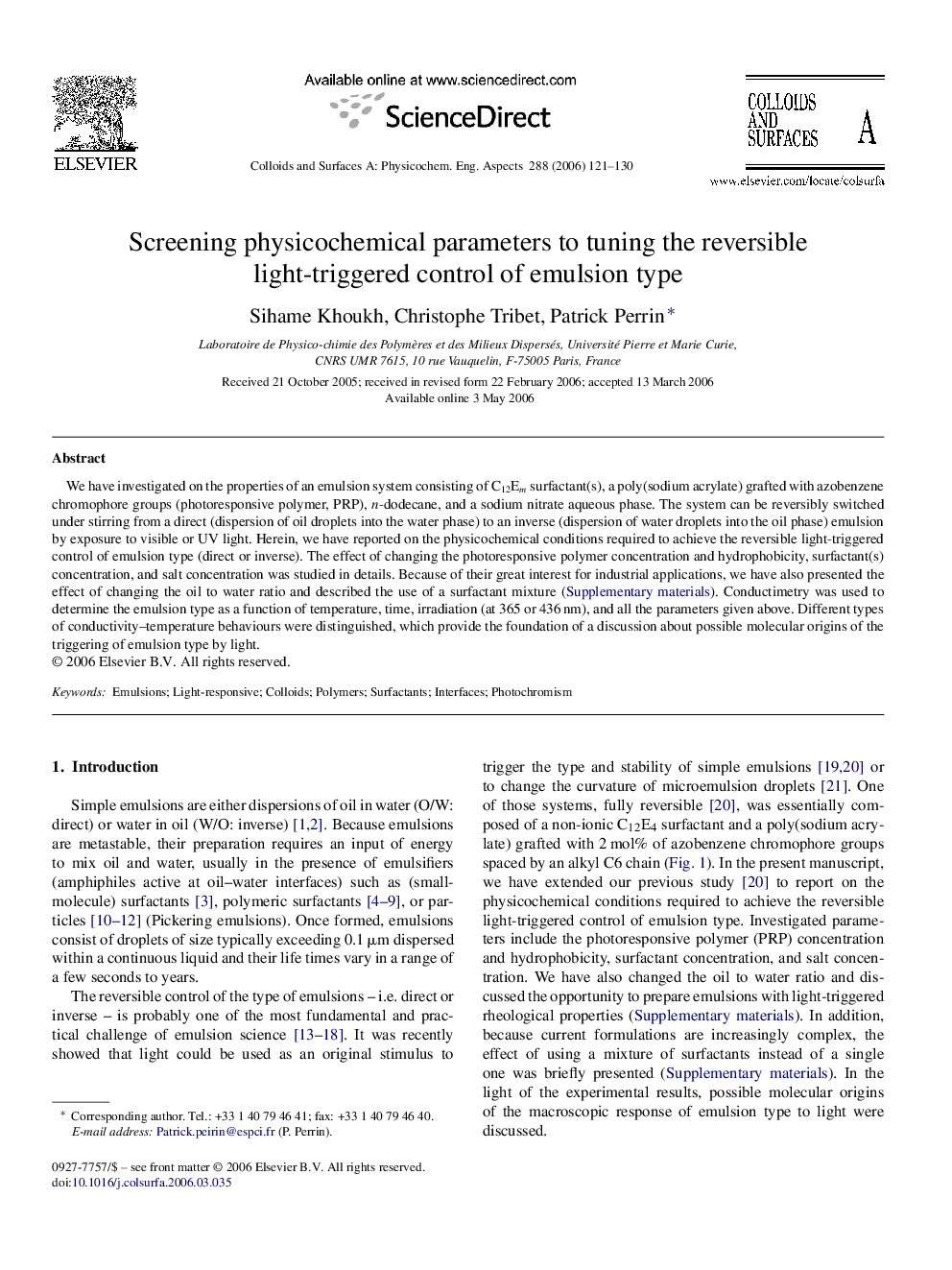| Article ID | Journal | Published Year | Pages | File Type |
|---|---|---|---|---|
| 598112 | Colloids and Surfaces A: Physicochemical and Engineering Aspects | 2006 | 10 Pages |
We have investigated on the properties of an emulsion system consisting of C12Em surfactant(s), a poly(sodium acrylate) grafted with azobenzene chromophore groups (photoresponsive polymer, PRP), n-dodecane, and a sodium nitrate aqueous phase. The system can be reversibly switched under stirring from a direct (dispersion of oil droplets into the water phase) to an inverse (dispersion of water droplets into the oil phase) emulsion by exposure to visible or UV light. Herein, we have reported on the physicochemical conditions required to achieve the reversible light-triggered control of emulsion type (direct or inverse). The effect of changing the photoresponsive polymer concentration and hydrophobicity, surfactant(s) concentration, and salt concentration was studied in details. Because of their great interest for industrial applications, we have also presented the effect of changing the oil to water ratio and described the use of a surfactant mixture ( Supplementary materials). Conductimetry was used to determine the emulsion type as a function of temperature, time, irradiation (at 365 or 436 nm), and all the parameters given above. Different types of conductivity–temperature behaviours were distinguished, which provide the foundation of a discussion about possible molecular origins of the triggering of emulsion type by light.
